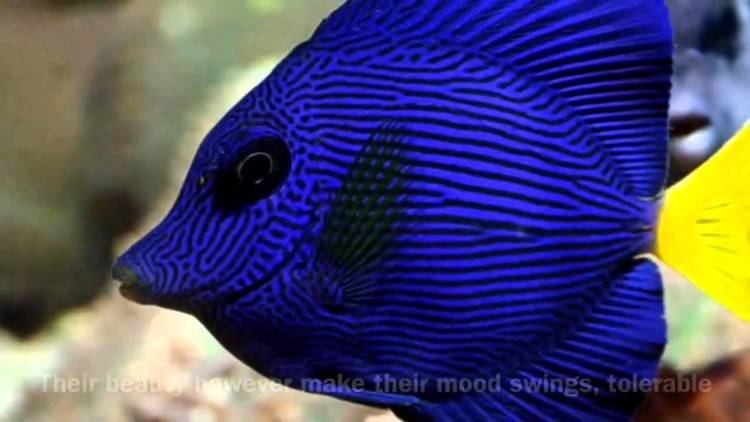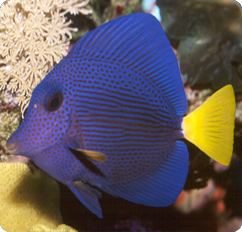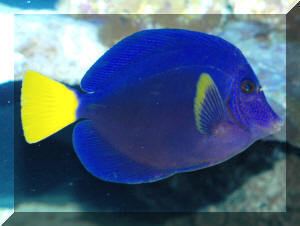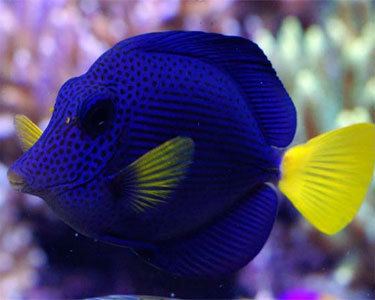Order Perciformes | Phylum Chordata Scientific name Zebrasoma xanthurum Rank Species | |
 | ||
Similar Acanthuridae, Zebrasoma, Yellow tang, Sailfin tang, Acanthurus leucosternon | ||
Zebrasoma xanthurum, the purple tang or yellowtail tang, is a species of reef surgeonfish in the family Acanthuridae. It was first described by zoologist Edward Blyth in 1852.
Contents

Purple tang zebrasoma xanthurum
Description
Purple tangs grow to a maximum length of near 25 cm (9.8 in). Their bodies are purple in color with a yellow tail. The heads of purple tangs are covered with black spots, and black horizontal lines run down the sides of the bodies of some specimens. The center of their bodies are sometimes a darker color of purple relative to the rest of their bodies. On most specimens, the tips of their pectoral fins are yellow.

Like all members of the genus Zebrasoma, purple tangs have large dorsal and anal fins and an extended snout that is used to forage for algae within rocks. When the dorsal and anal fins are fully extended, the fish looks like a disk.

As typical of all surgeonfish, purple tangs have a sharp spines on each side of their caudal peduncle, which are used for defense.
Distribution

It has been historically noted that purple tangs are only found in the Red Sea, but it has now been understood that this is not completely true. Purple tangs have now been found in the Gulf of Aden, Persian Gulf, and the Arabian Sea.
Habitat

Purple tangs typically inhabit coral reef ecosystems, where they are found eating filamentous algae in the reef. They have been found at depths ranging from 2 to 20 m (6.6 to 65.6 ft). Adults are typically found swimming in shoals, while juveniles remain solitary.
